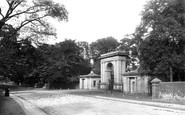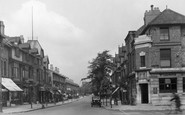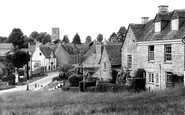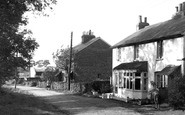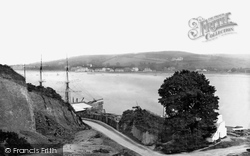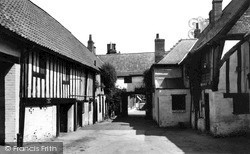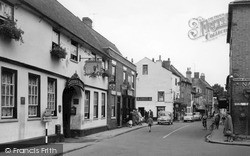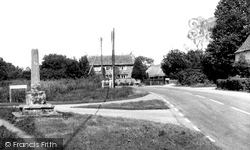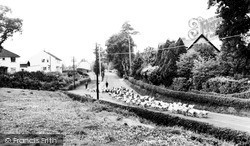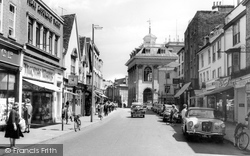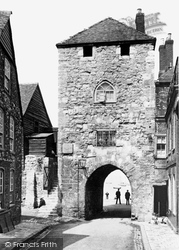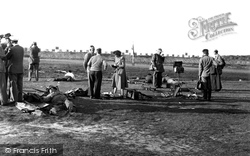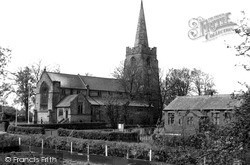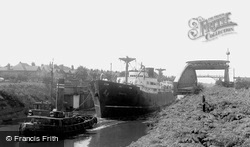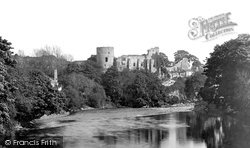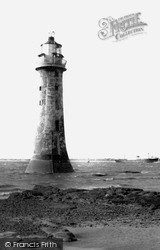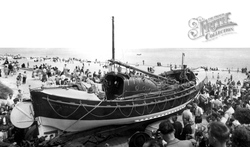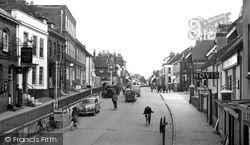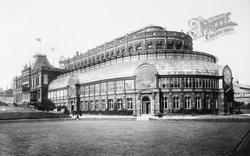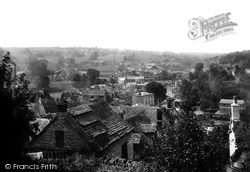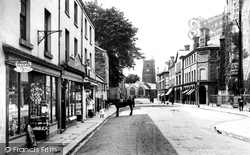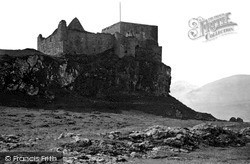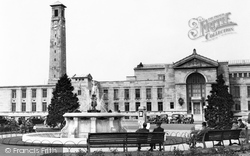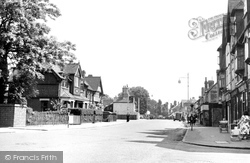Places
3 places found.
Those places high-lighted have photos. All locations may have maps, books and memories.
Photos
68 photos found. Showing results 1,761 to 68.
Maps
12 maps found.
Books
15 books found. Showing results 2,113 to 15.
Memories
7,564 memories found. Showing results 881 to 890.
Re Comment By John Howard Norfolk On Wigan Clogs
Wigan-made clogs always did have a reputation even way back when - so it's nice to have this confirmation of their quality holding up even to today. I've even discovered that one of my ancestors made ...Read more
A memory of Wigan by
Happy Times
I WAS BROUGHT UP IN BROAD HINTON AND LIVED AT 14 THE CROFT ITS A GREAT PLACE TO LIVE. I HAVE SO MANY HAPPY MEMORIES FROM WHEN I WAS YOUNG PLAYING ON THE TOP BANK.
A memory of Broad Hinton by
Little Sutton
I seem to have opened up vast memory stores here! It's good to know so many people who were around at the time I was at Berwick Road are still around today. Mind you, fifty-ish isn't old these days never mind what teenagers ...Read more
A memory of Little Sutton by
The Marlborough
The white building in the picture below the church tower was the Marlborough pub. During the war through till the early 1950s my grandmother and grandfather were licencees and my father was brought up there. I have a picture of ...Read more
A memory of Charlbury in 1940 by
The Norfolk Family
I am John Howard Norfolk and although I have never lived in Yorkshire I know that my Norfolk family were farmers, millers and tanners in Harewood and nearby Wharfedale villages for many hundreds of years until the late 1800's. ...Read more
A memory of Harewood in 1860 by
Happy Days
i was born in Algers Road, Loughton in 1942 and moved to Chigwell in 1944, then back to Buckhurst Hill in 1947. My dad worked as a lorry driver for W.C.French. My brother Chris and friends used to walk up to Buckhurst Hill High ...Read more
A memory of Buckhurst Hill in 1947 by
Roby Mill School
I attended Roby Mill School. Miss Simm was my teacher. She caught the bus to the monument (Vicarage Corner), and walked down College Road picking pupils up along the way. It was almost 1 mile in distance, she did this twice a ...Read more
A memory of Upholland Sta in 1949 by
Goldthorpe In The Fifties
I was born in 1946 and lived in Manor Avenue. Cricket with dustbin lids propped up with a house brick in the "backins" were our stumps and we played from dawn to dusk during the summer holidays...except during Wimbledon ...Read more
A memory of Goldthorpe by
My Subsequent Visit 29.10.2008
My wife and I had pre-arranged to meet my sister and her entourage in the Fox and Hounds at midday yesterday. The long and winding lane from Eynsford became muddier and narrower with each passing mile and we ...Read more
A memory of Romney Street in 2008 by
Captions
2,501 captions found. Showing results 2,113 to 2,136.
Instow grew as a resort town at the mouth of the Torridge in the 1830s, and most of the terraces and villas on the shore in this picture date from then.
Frith's photographer was looking back through the carriageway towards Church Street straight ahead.
Frith's photographer was looking back through the carriageway towards Church Street straight ahead.
This Wiltshire village is known locally as the village of four crosses, all medieval.
Inside the Castle, the photographer looks back to the gatehouse, which is basically 14th-century over a Norman archway, although the drum towers on this side are early 19th-century.
Looking back up North Street towards the Parade and Market House, with the Post Office on the left, as it still is today.
Though the shore to the south of Ramsey is rocky, a stroll along it at low tide was a popular Victorian way of taking some gentle exercise.
Near the middle of Wales, sheep are driven along a back road near the old market town. Llanidloes was one of the major centres for wool and flannel production from the late middle ages.
The impressive building just right of centre was once Berkshire's old County Hall. Christopher Kempster, a master mason who had worked for Sir Christopher Wren, built it between 1678 and 1682.
The timber-framed Tudor House, one of the city's finest buildings, dates back to about 1500, and has hardly changed at all since this photograph was taken.
There is another village in Bisley - that of the clubhouses and mobile homes found at the National Rifle Association's ranges.
This is still referred to as the 'new church'—religion in this area goes back 4000 years. The first Christian church at Newers Wood had a moat.
Whenever the Chester Road and Northwich Road swing-bridges are opened to allow ships to pass along the Manchester Ship Canal, Warrington grinds to a halt; traffic tails back for hundreds of yards either
The earliest castle here is thought to have been built by Bernard de Baliol.
Constructed from granite blocks cemented together with 'puzzellani', a special hardening material developed from volcanic dust extracted from the slopes of Mount Etna, the lighthouse was
The town is renowned for the bravery of its lifeboat crew who responded to an urgent signal of distress in 1901.
We are looking back up Crown Hill, with the sign of the Crown on the left.
Despite the grand appearance of the building, the acoustics in the Winter Gardens pavilion were suspect.
Back across the river, via the Batheaston toll bridge, follow the Avon south before turning right to Monkton Combe, a delightful village nestling in the valley of the Midford Brook.
Viewed from Watledge, the Railway Hotel is shown clearly in the centre of the picture, with C W Jones' coal office behind the chimney to the right.
This photograph looks in the opposite direction to number 22546. The church is St Eustace, one of only two in the country dedicated to this saint.
This is the ancestral home of the chiefs of the Macleans. The Macleans paid the price for siding with James VII against William III, forfeiting castle and estates.
At the heart of Southampton lies the Civic Centre, with its council offices, law courts and art gallery.
Hare Street existed long before the creation of the garden suburb of Gidea Park but has now all but lost its separate identity.
Places (3)
Photos (68)
Memories (7564)
Books (15)
Maps (12)

